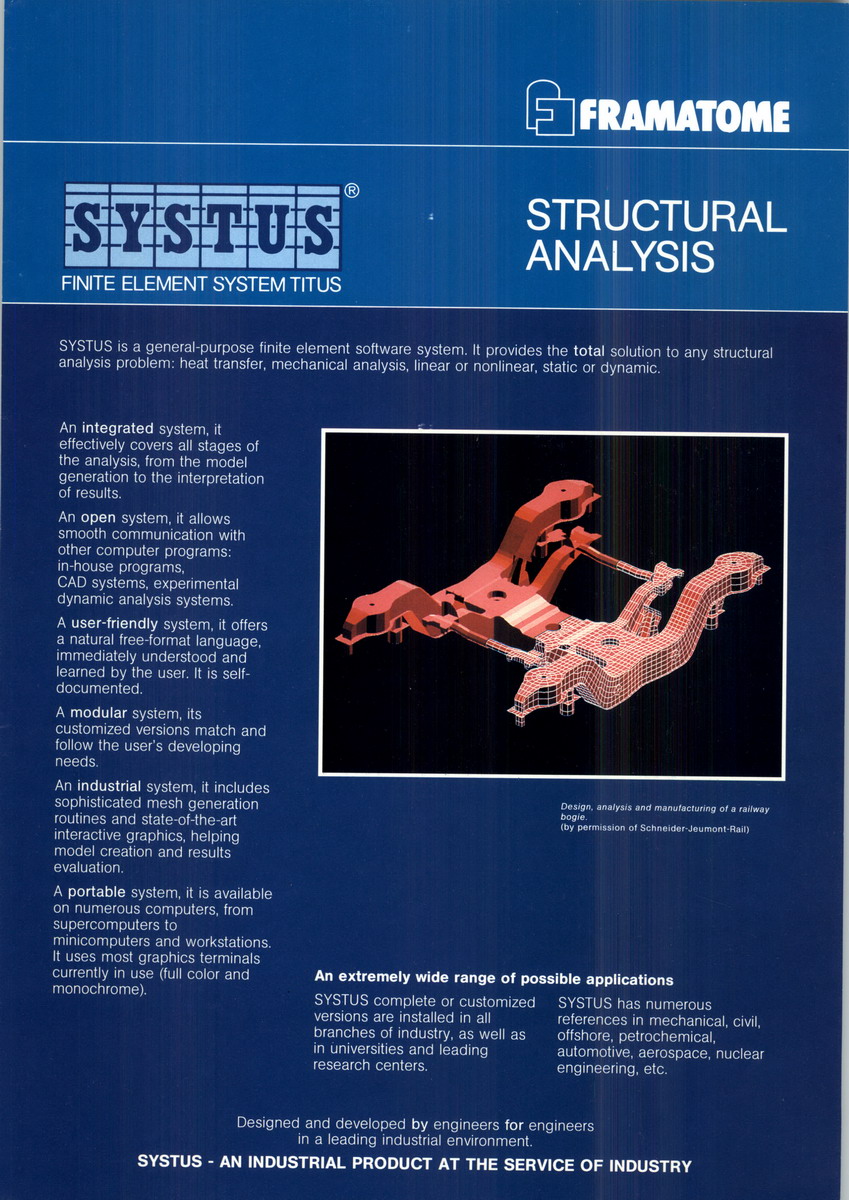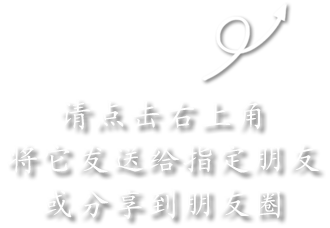Framatome SA is a diversified, international manufacturing company and also the world leader in nuclear power generation. There are 64 nuclear power plants operating Framatome-built reactors worldwide, and another six reactors under construction in France and the People's Republic of China, representing a total energy output capacity of more than 58,000 megawatts. Beyond designing and constructing nuclear power islands, the company provides a full spectrum of nuclear power services, including maintenance, inspection, and upgrading services for utilities operating its own and third party nuclear plants; manufacture of nuclear components for power plant construction and maintenance; and the design, fabrication, marketing, and sale of nuclear fuel assemblies.Although nuclear power continues to represent approximately two-thirds of Framatome's annual sales, the company has responded to the worldwide slowdown in the nuclear power market (in the United States, for example, no new nuclear power plants have been constructed since 1980) by diversifying into other areas of manufacturing. Chief among these, producing nearly one-fourth of the company's annual sales, is the connectors business, operated through Framatome's wholly owned Framatome Connectors International subsidiary. Connectors refer to the wide variety of interconnection techniques and devices used to transmit electrical energy or electronic and optical signals between and among equipment and electronic circuits. Framatome supplies connectors to the automotive, electronics, aerospace, telecommunications, computer and computer network, and other industries. Framatome is the leading European supplier and third largest worldwide in the design, manufacturing, marketing, and sale of connectors.The next major area of Framatome diversification is mechanical engineering. Framatome and its subsidiaries design, manufacture, and install equipment and machinery for a range of industries and applications. The mechanical engineering division's products include heavy components for nuclear steam supply systems, reactor coolant systems, control rod drive mechanisms, closure heads, and other electromechanical components for the nuclear power industry. Beyond nuclear power, Framatome supplies turbines and compressors, large-capacity heat exchangers, electric generators and motors, twin-screw extruders, tunneling machines, large astronomical telescopes, and other machinery and equipment on the leading edge of technology.An attempted merger with GEC-Alsthom, a joint venture operation between Britain's GEC and longtime Framatome rival Alcatel-Alsthom, the former French electric monopoly, was successfully scuttled in April 1997. Framatome, which posted revenues of FFr 17 billion in 1995, remains 51 percent owned by the French government.
Building the Nuclear Society in the 1950s
When the world turned toward peacetime use of the newly emerging nuclear technology after the Second World War, France, with limited natural fuel resources of its own, determined to develop its own nuclear reactor program as a means for preserving its independence. By 1955, the country, in a joint effort with England, had debuted a reactor technology that could rival that developed by Westinghouse in the United States. Although there were as many as 12 competing technologies, an atomic summit among European countries confirmed the French-English GCR (gas-cooled reactor) and the American PWR (pressurized water reactor) as the two most viable technologies. Both types of reactors were already in operation. But GCR offered the French the independence they sought, as that technology made use of natural uranium, rather than the enriched uranium of the American system. The process of enriching uranium for use in nuclear reactors was too expensive for the postwar European economy. While the Americans offered to supply enriched uranium for European reactor use, the French government, jealous of its independence, appeared to lean toward authorizing GCR as the "national" nuclear reactor technology. Spurring this preference was the crisis in the Suez of 1956, an event that helped expose the French dependence on foreign-supplied fuel resources. The first three reactors built in France were of the GCR type.In Belgium, however, PWR reactors were preferred. In the late 1950s, the Belgians sought bids for building their first full-scale nuclear reactor, eventually called Chooz 1, to be built in the Ardennes region near the French-Belgian border. Although the French government, through the CEA (the French atomic energy commission), favored the GCR technology, a group of French engineers saw an opportunity to pursue the PWR technology and to compete for the Belgian reactor contract. In 1958, several companies of French industrial giant the Schneider Group joined with Empain, Merlin Gérin, and the American Westinghouse to license Westinghouse's PWR technology and develop a bid for Chooz 1. Called Franco-Américaine de Constructions Atomiques, the new company flew in the face of the rising anti-Americanism of the rebuilding French society. The original mission of the company, which consisted of four engineers, one each from each of the parent companies, was to act as a nuclear engineering firm and to develop a nuclear power plant that was to be identical to Westinghouse's existing product specifications. The first European plant of Westinghouse design was by then already under construction in Italy.Meanwhile, the EDF (the French government-owned electric utility), in opposition to the CEA, maintained an interest in PWR technology. The Chooz contract offered the EDF, which joined with the Belgian electric utilities to call for the Chooz bids, the opportunity to explore PWR without offending the French national pride in its homegrown GCR technology. By the beginning of 1960, only two bids remained in contention; in the middle of the year, Framatome received informal permission to begin the design work on the Chooz reactor. A formal contract was signed in September 1961 for Framatome to deliver a turnkey system, that is, not only the reactor, but an entire, ready-to-use system of piping, cabling, supports, and other auxiliary systems, propelling Framatome from a nuclear engineering firm to an industrial contractor.Through the 1960s, Framatome worked very much as a Westinghouse protégé, and development of the Chooz plant was restricted to Westinghouse requirements. The Chooz 1 reactor went critical in October 1966 and was attached to the French electric system in April of the following year. Several months later, a deformation in the reactor core's internal thermal shield, which had begun to break apart, caused the reactor to be shut down. The unprecedented nature of the repair work that needed to be performed, however, placed Westinghouse and Framatome on equal footing. This development was seen as an integral part in the creation of a true French nuclear technology. From this point, Framatome, aided by the French nuclear and electric agencies, began to "franconize" the Westinghouse technology. Chooz 1 went back on line after two years of repair work and continued to operate without incident until 1993, when it was shut down.In the meantime, the French government appeared to have decided on GCR as the national nuclear technology. Much of the Framatome team returned to their parent companies. A break for the company came in 1966, with a report from leading members of both the EDF and the CEA recommending that France continue to pursue an interest in PWR technology. Then, in 1969, Framatome won its second nuclear plant contract, again from a French-Belgian cooperative agreement, to build the Tihange 1 plant in Belgium. Tihange not only breathed new life into Framatome, it also allowed the company to begin diverging from Westinghouse specifications with its own improvements on the design. By 1969, the company received a new boost: the French military had successfully built a uranium enriching plant, freeing the light water reactor technology from dependence on U.S. or Soviet Union supplies of the material. GCR faded from the French focus. But two competing light water reactor technologies remained--PWR, used by Framatome, and BWR (boiling water reactor), developed by General Electric and promoted by the CGE in France.The two technologies went head to head for a contract to build the first Fessenheim plant. CGE had yet to build a light water reactor, while Framatome had not only Chooz, but Tihange, under its belt. In a meeting with CGE, Framatome's chief executive, Maurice Aragou, warned of the high cost associated with building the Chooz reactor. CGE took his advice to heart and submitted a bid of 360 million francs for the Fessenheim reactor. Framatome, however, was able to base its bid on its costs of building Tihange (at the same time the company was able to extrapolate the cost of building a series of reactors) and brought in a bid of only 242 million francs. Framatome won not only the Fessenheim 1 contract, but an option to build Fessenheim 2 as well. The following year, Framatome repeated its success, winning the contracts for two new French reactors, Bugey 1 and 2, as well as the options to build Bugey 3 and 4. Nonetheless, the French government pursued a course of encouraging the development of both light water reactor technologies.






















